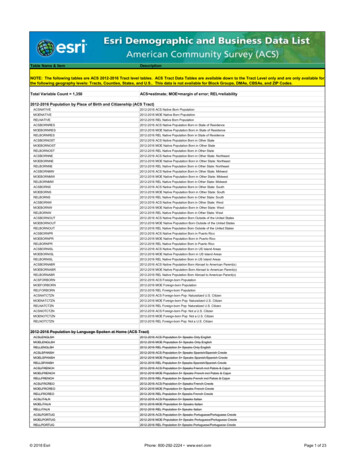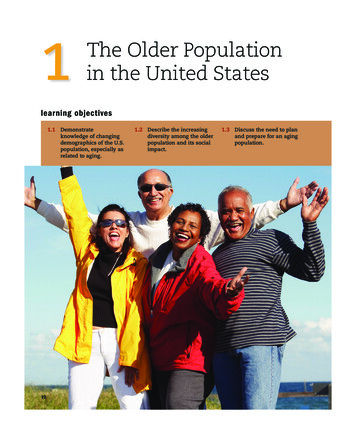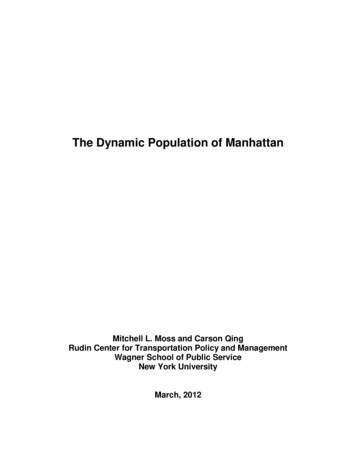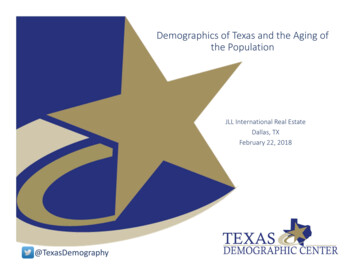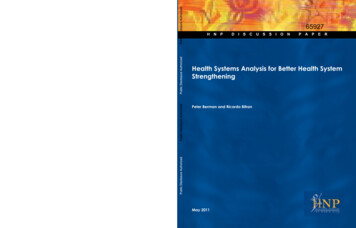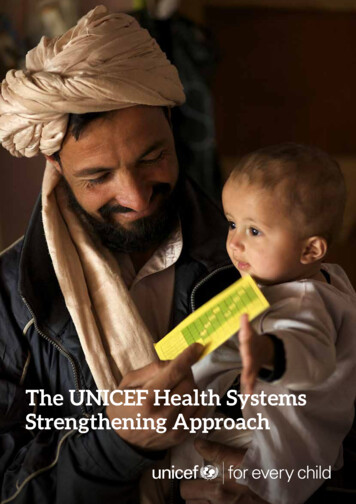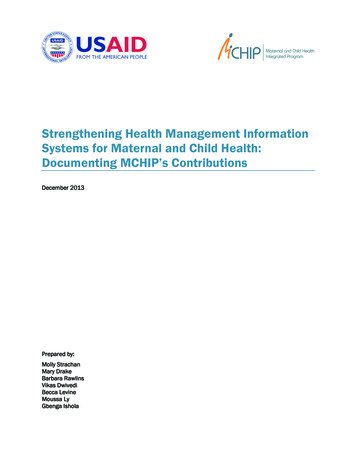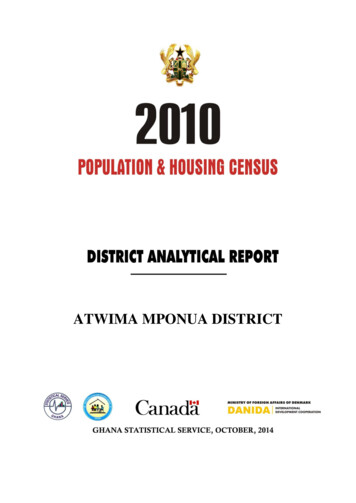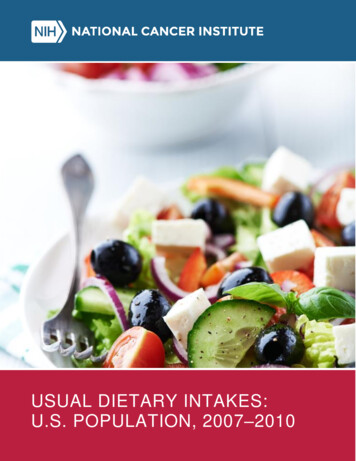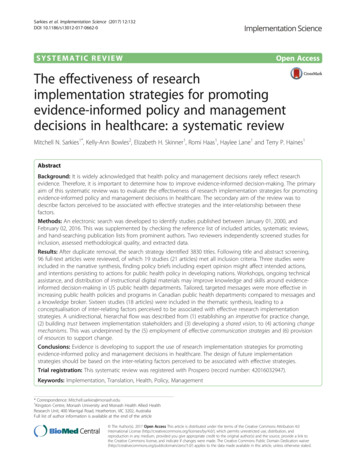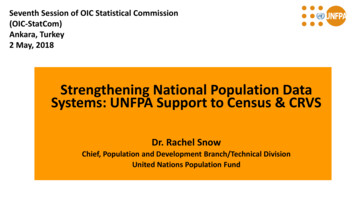
Transcription
Seventh Session of OIC Statistical Commission(OIC-StatCom)Ankara, Turkey2 May, 2018Strengthening National Population DataSystems: UNFPA Support to Census & CRVSDr. Rachel SnowChief, Population and Development Branch/Technical DivisionUnited Nations Population Fund1
Agenda 2030 - High DemandsAll governments should be capable of identifying and locatingthe most vulnerable, disaggregating data, and trackingprogress towards SDGsPopulation census and Civil Registration and Vital Statistics(CRVS), together with household surveys and demographicsurveillance systems, are complementary instruments of thepopulation data ecosystem.( 98 SDG Indicators demand population data)2
Census, CRVS Systems share attributesAttributes that need to be upheld to be useful: universality (coverage of all areas and entire population in acountry); continuity and permanence on the part of CRVS andregularity on the part of census; enforceability (backed by appropriate legislation); and confidentiality (protection of identity of individuals andrelevant data)3
Population Data: Basis for upholdinghuman rightsA comprehensive and continuous system of recording of vitalevents experienced by individuals at all stages of their lives is afoundation of human and civil rights (www.uneca.org). Itestablishes legal identity of individuals and the legal relationshipbetween them and the state.Census complements by mapping the relationships betweenindividuals, and the economic well-being of individuals,households, communities and administrative units.
National dates for 2020 round of census
UNFPA priorities for the 2020 census round1. Use of hand-held devices to enhance cartographyand generate high-resolution geospatial census data2. Strengthen capacity for using geospatial census dataand integrating with other datasets3. Support hybrid census, where full enumeration is notpossible4. Support dissemination and access to data
Advocacy, Procurement: GIS mapping technology Timeliness of mapping as boundaries are defined on the spotHigh quality EA boundaries to avoid omission or duplicationAccuracy & consistency in classification of features captured in mappingMapping infrastructure, road systems
Improving Digital Cartography Maps provide the cartographic base for enumeration and theplatform for spatial census data products
GPS locations of HHs improve spatial resolution ofcensus data
Combining HH GPS locationswith high resolution satellite imagery improves coverage
Improve quality of enumerationImprove census qualityand coverage Using GPS navigation ofHH by fieldworkers Monitoring enumerationin real time11
Using Census to Disaggregate SDG IndicatorsChild Marriage in ZambiaSAE: Family Planning in Nepal
Supporting Census Dissemination Modern platforms forshared access, visualizationof data Redatam / IMIS for opensource census dissemination Advocacy for public access
Supporting hybrid census, where fullenumeration not possibleAncillary geospatial dataSlopeVegetation indexSlopeNight-timelightsSettlementsPartnership of UNFPA, WorldPop/Flowminder, and Afghanistan National Statistics Office.
3GRIDGeo-Referenced Infrastructure andDemographic Data for Developmentlaunched March 2018UN Statistical Commisison
Strengthening Civil Registration Data1. Foster full use of census datain the framework of nationalstatistical systems1. Cross validation to assess CRVScoverage and quality1. Modeling incomplete data
Variable Coverage in Death RegistrationCitation: Phillips et al.; The Lancet, 2015
Integrating Data to assess disparities in DeathRegistrationMorocco DR Completenessages: 15-59 yrs (1994-2004)Female: 35%Male: 65%Indirect estimation usingsuccessive censuses andinter-censal deathregistration dataForthcoming:Qualitative Ethnographic Analysis tounderstand: Effects of cultural traditions on femaledeath registration Incentives/disincentivesEvaluate effects of revised 2004 FamilyCode? 2004 & 2014 Census data 2004-2014 registration data18
Research and Advocacyto Strengthen CRVS Systems Improve completeness estimates and demographic dataquality assessment of civil registration data Better understand operational and cultural bottlenecks Promote norm of routine vital statistics production andusage - annual publication of vital statistics19
Special Focus: Improve Data on Marriage andDivorce Registration As DHS and MICS have done for birth registration – Promote HH surveys and Census to questions on Type of marriage Marriage registration Divorce registrationLack of marriage and divorce registration has disproportionate social andeconomic effects for femalesCombined with Death registration – protects right to inherit property, toaccess business and financial entitlements, and to claim availableinsurance benefits.
Summary: Key UNFPA Actions Strengthen census worldwide – 2020 focus on geospatialcensus, use of data for subnational attention to SDGs, hybridcensus – GRID3 Integration of data systems a priority – coverage & quality Address data gaps on death, marriage, divorce registration Beyond Morocco: sex differentials in death registrationcoverage Improve data on marriage and divorce coverage Partnerships and Shared Action – ICCC / GRID3
Thank you
1. Use of hand-held devices to enhance cartography and generate high-resolution geospatial census data 2. Strengthen capacity for using geospatial census data and integrating with other datasets 3. Support hybrid census, where full enumeration is not possible 4. Support dissemination and access to data

